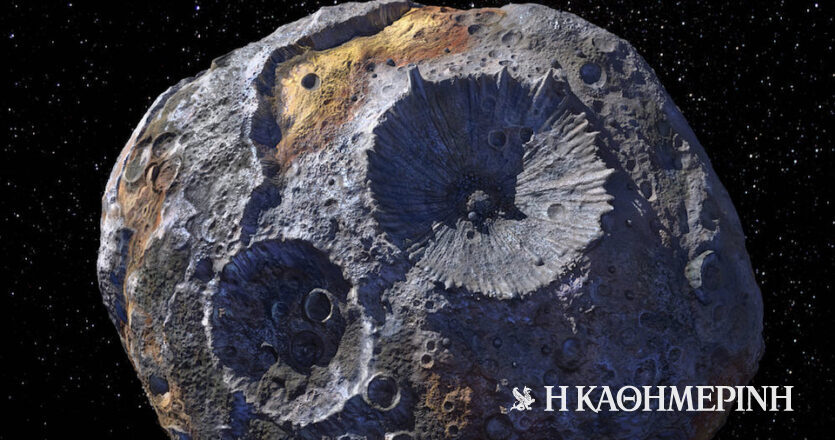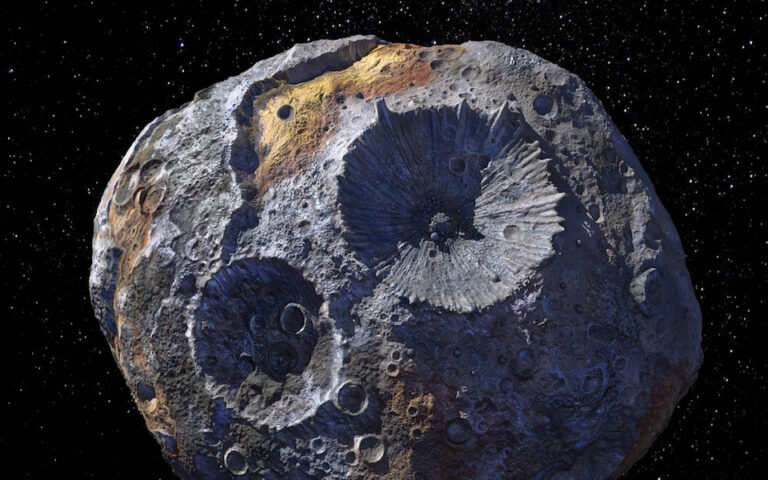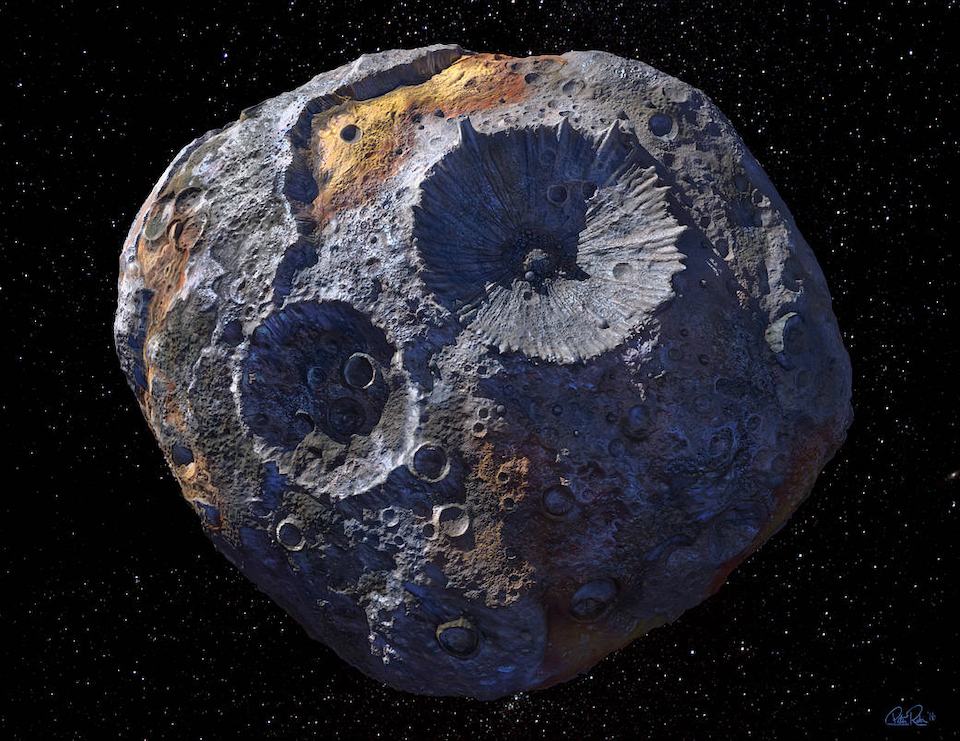

Source NASA/JPL-CALTECH/ASU
the NASA A billion-dollar mission is preparing for the alien asteroid “Psyche”, which in the space economy will be “worth” 75,000 times more than the current global economy.
Psyche is a unique metallic asteroid orbiting the Sun between Mars and Jupiter. What makes the asteroid rare is its (seemingly) exposed iron-nickel core, which is one of the building blocks of our solar system.
On Earth, the corresponding material is inaccessible under the crust and mantle.
According to Forbes’ estimation, if the space technology for mining valuable content found it would match current prices at $10,000 quadrillion dollars.
NASA, with a slight delay, is preparing for the mission not with the goal of mining, of course, but to understand an unexplored structural element of the planets, the iron cores.
This is a promising exploration of a different kind of world, as it is not made of rock and ice, but of metal.
The spacecraft will take 3.5 years to travel, and once it reaches the asteroid, it will orbit it for 21 months, mapping and studying the properties of the exotic and potentially valuable new world.
Sources NASA and Forbes
Follow kathimerini.gr on Google News and be the first to know all the news
See what’s new News From Greece and the World, in kathimerini.gr
window.dataLayer = window.dataLayer || [];
function gtag() { dataLayer.push(arguments); }
gtag('js', new Date());
gtag('config', 'G-JJJ7LY7JGM', { 'custom_map': {'dimension3': 'Author'} });
gtag('event', 'author_dimension', {'Author': 'Newsroom'});
}, 0)
// NEW SECOND ANALYTICS setTimeout(function () { (function (d, s, id) { var js, fjs = d.getElementsByTagName(s)[0]; if (d.getElementById(id)) return; js = d.createElement(s); js.id = id; js.async = true; js.src = "https://www.googletagmanager.com/gtag/js?id=UA-112314455-3"; fjs.parentNode.insertBefore(js, fjs); }(document, 'script', 'ga-2'));
window.dataLayer = window.dataLayer || [];
function gtag() { dataLayer.push(arguments); }
gtag('js', new Date()); gtag('config', 'UA-112314455-3');
}, 0) }; document.addEventListener("scroll", NXQuantFuncGTAG);
var NXFbPixel = function () { document.removeEventListener("scroll", NXFbPixel); setTimeout(function () { !function (f, b, e, v, n, t, s) { if (f.fbq) return; n = f.fbq = function () { n.callMethod ? n.callMethod.apply(n, arguments) : n.queue.push(arguments) }; if (!f._fbq) f._fbq = n; n.push = n; n.loaded = !0; n.version = '2.0'; n.queue = []; t = b.createElement(e); t.async = !0; t.src = v; s = b.getElementsByTagName(e)[0]; s.parentNode.insertBefore(t, s) }(window, document, 'script', 'https://connect.facebook.net/en_US/fbevents.js'); fbq('init', '109138906120213'); fbq('track', 'PageView'); }, 0) } document.addEventListener("scroll", NXFbPixel);
var NXTagManager = function () { document.removeEventListener("scroll", NXTagManager); setTimeout(function () { (function(w, d, s, l, i) { w[l] = w[l] || []; w[l].push({ 'gtm.start': new Date().getTime(), event: 'gtm.js' }); var f = d.getElementsByTagName(s)[0], j = d.createElement(s), dl = l != 'dataLayer' ? '&l=" + l : "'; j.async = true; j.src="https://www.googletagmanager.com/gtm.js?id=" + i + dl; f.parentNode.insertBefore(j, f); })(window, document, 'script', 'dataLayer', 'GTM-WWR8QSQ'); }, 0) } document.addEventListener("scroll", NXTagManager);

“Avid problem solver. Extreme social media junkie. Beer buff. Coffee guru. Internet geek. Travel ninja.”






More Stories
In Greece Porsche 911 50th Anniversary – How much does it cost?
PS Plus: With a free Harry Potter game, the new season begins on the service
Sony set to unveil PS5 Pro before holiday season – Playstation